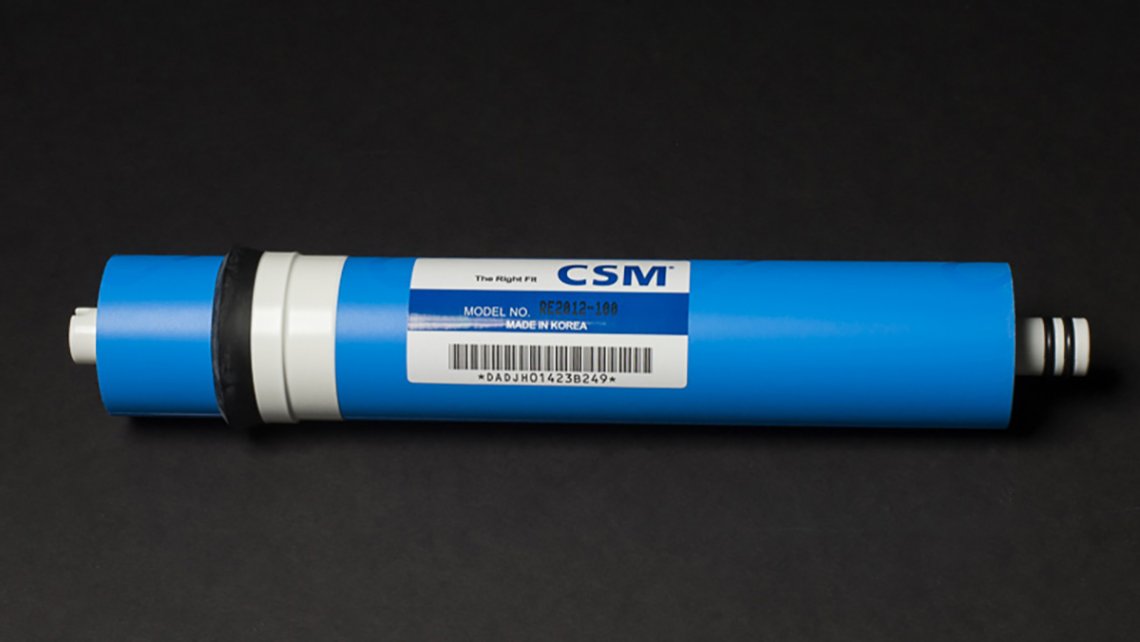How to change a RO membrane
These important steps will keep things running as they should
Some areas have softer water, while others quite the opposite. Source water that measures less than 300 TDS is best; anything higher is harder on the system. Measuring the source water's TDS levels can provide some idea of the conditions you are dealing with. The higher the TDS, the harder the membrane has to work, and decreases its life. Lower TDS-laden water is always better. Keep in mind that those numbers may vary throughout the year, affecting the way your RO system works.
1) Turn off the water going into the RO/DI system.
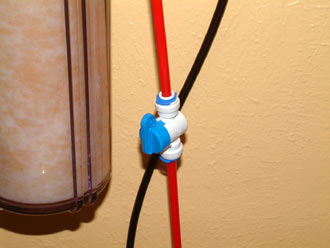
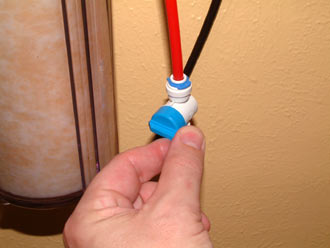
I installed an extra ball valve (available in my reef shop) in the cold water (red) line, to make it easier to shut off the water. My connection is behind the washing machine, and honestly I'd rather turn off the water to the entire house than try to get behind the washing machine. Thus this little modification made my life much easier. PLUS if you go on vacation, it might be wise to turn off the water going to the RO unit to avoid a potential disaster.
2) Open the valve after the DI to release the pressure trapped in the system.
3) Remove the blue tubing leading to the Tee fitting (pictured below) to avoid possible damage to those fittings.
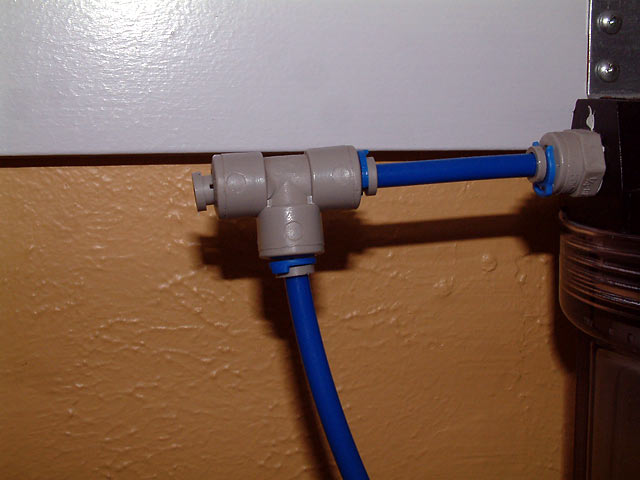
4) Remove the main RO unit from the wall.
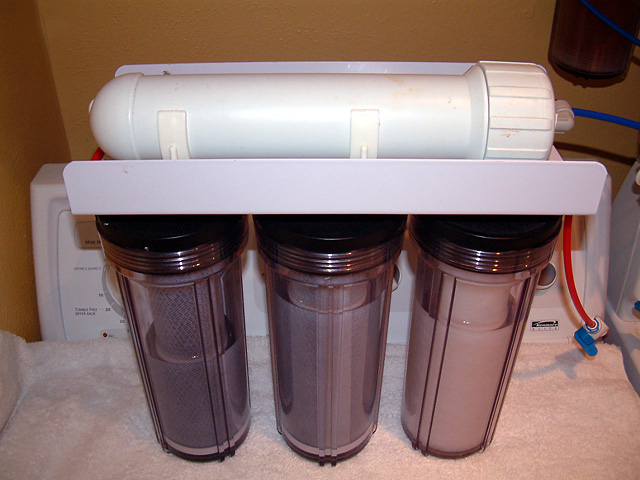
5) Disconnect the red tubing going into the right side of the RO membrane housing.
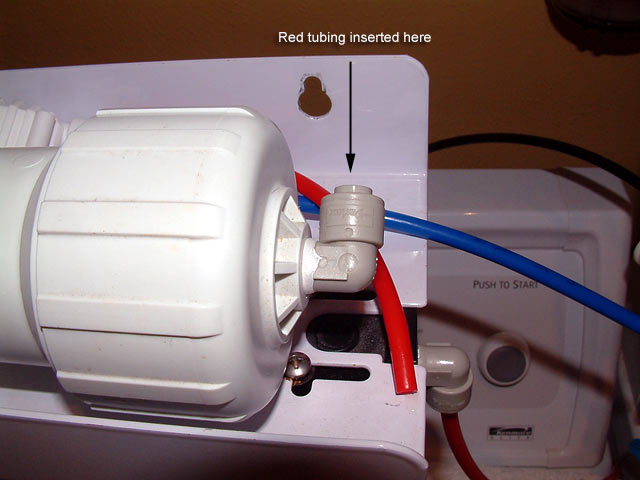
6) Disconnect the blue tubing going into the left side of the RO membrane housing.
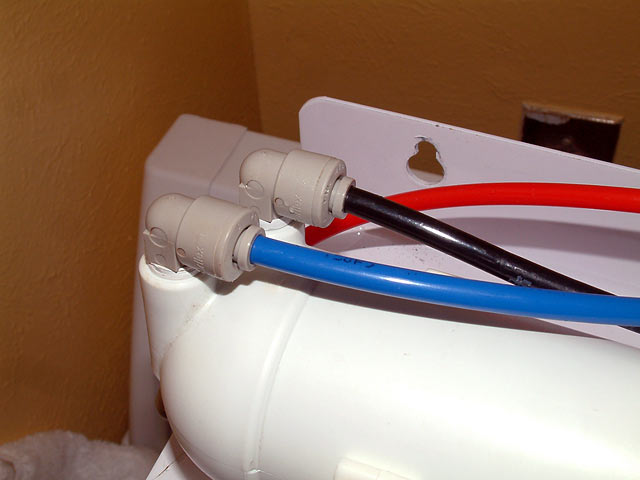
7) Disconnect the black tubing, being careful not to lose the flow restrictor located in the end of the black tubing.
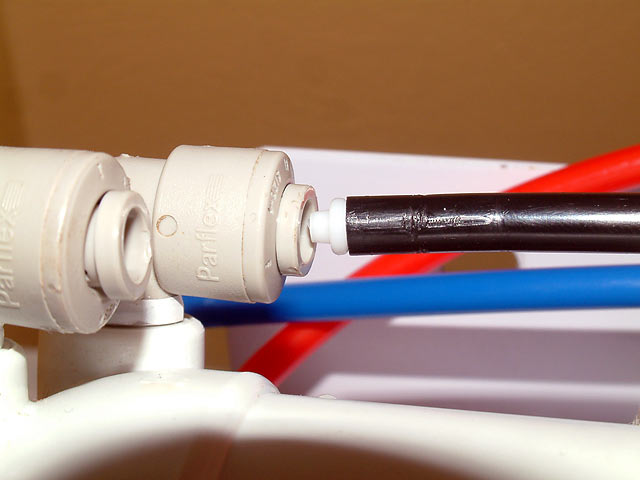
8) Carefully remove the white membrane housing from the clips affixed to the metal bracket.
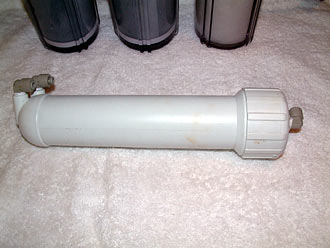
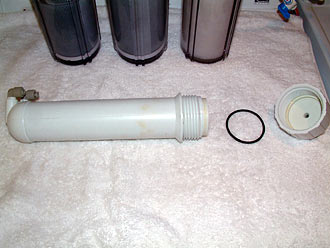
Opening the housing may be difficult. Soaking the right end in hot water for a few minutes may help. Large channel lock pliers and a helper is another option, or use strap wrenches. Once the cap is unscrewed, access to the old membrane is now possible.
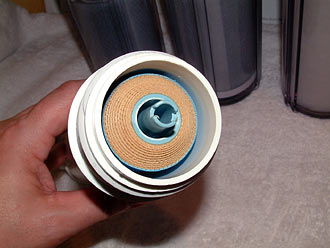
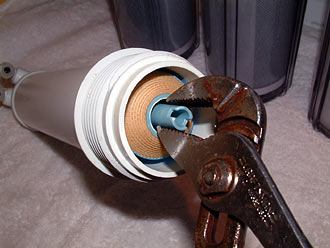
9) Using pliers, grip the plastic center rod carefully and gently pull the membrane out of the housing.
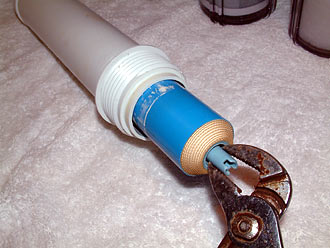
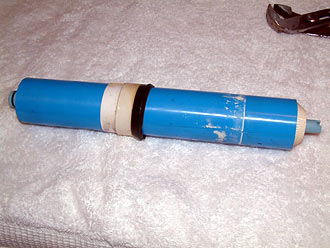
The above membrane was in my own RO/DI for over 5 years. The membrane was 'telescoping' to the left as water forced its way through, so much that it forced the black rubber gasket down the body of the membrane!
Next, open up the new membrane packaging, and verify that the new one and the old one match both in look and in length. If the membranes are off even by a 1/4" in length, it may not work in your system. The one I sell is the correct one for this system. (Pictured is an older membrane brand; I now offer the CSM brand.)
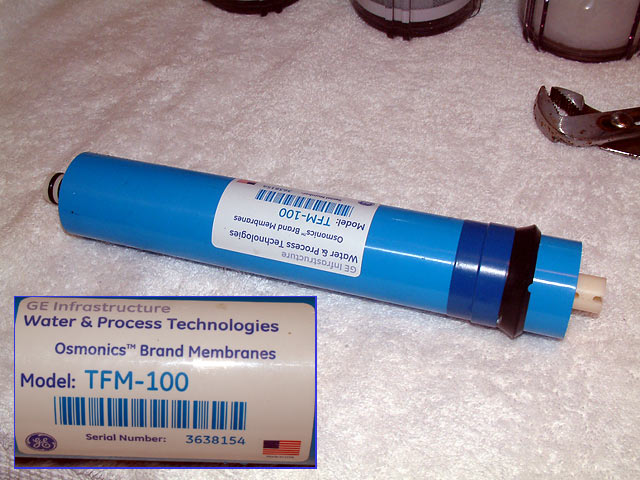
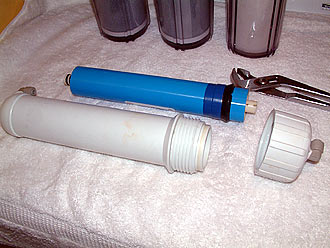
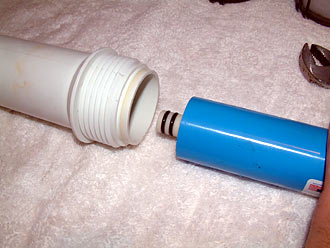
10) Insert the new membrane with the double black orings end going in first.
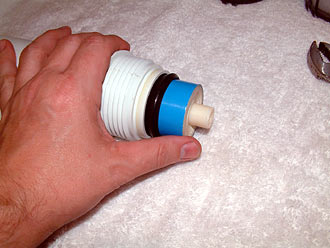
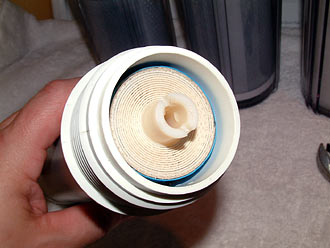
Do not force the membrane in. It should slide in easily. If some help is necessary, a little cooking oil on the orings as well as the black rubber gasket will allow it to slip in without damage to the membrane. If the membrane telescopes as it is inserted, it is being damaged.
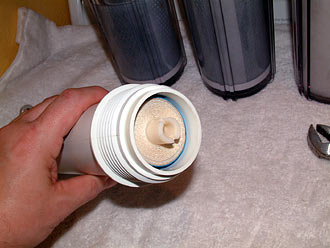
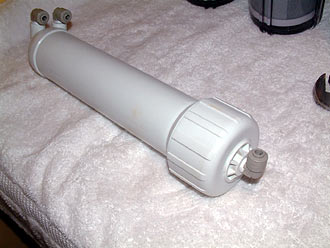
Press it in fully so it is completely seated in the housing. Don't hammer it in. Making sure the large black O-ring is in the cap, screw it back onto the housing hand-tight. No wrench is necessary.
11) Reinstall the housing on to the RO system's metal bracket.
12) Reconnect the red tubing to the right end of the membrane.
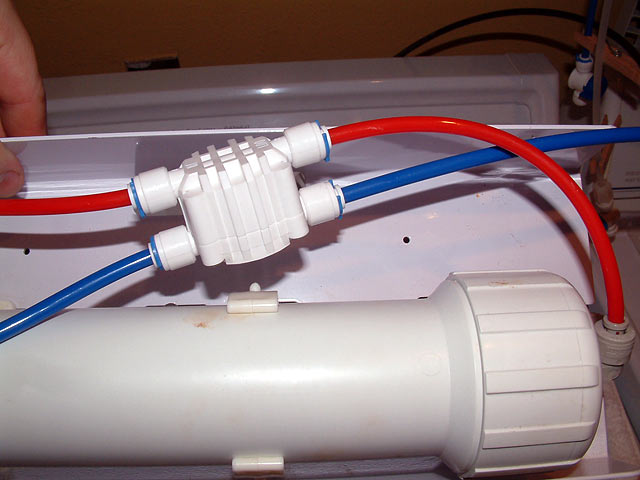
13) Reconnect the blue and black tubing to the left end of the housing. Make sure the flow restrictor is still inside the black tubing as you press it into the fitting.
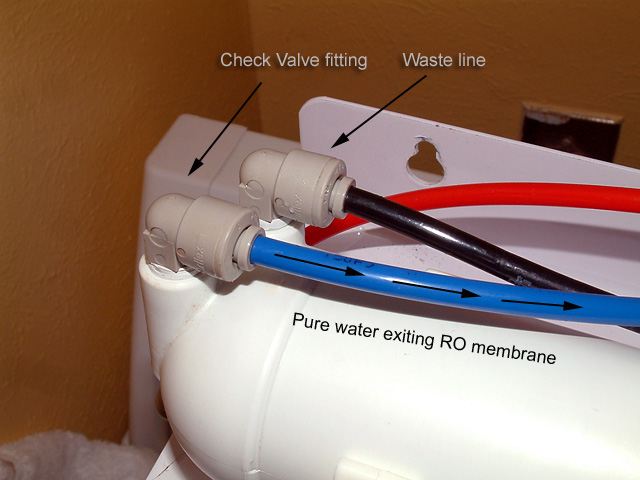
14) Reconnect the blue tubing to the Tee fitting leading to the DI section.
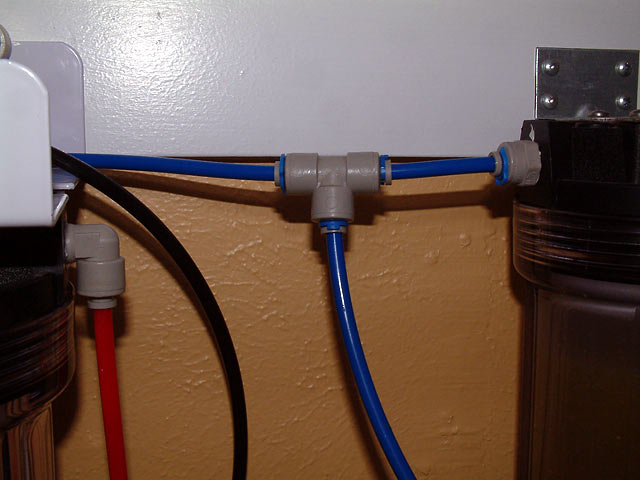
15) Turn on the water going to the RO system. Check system for any leaks.
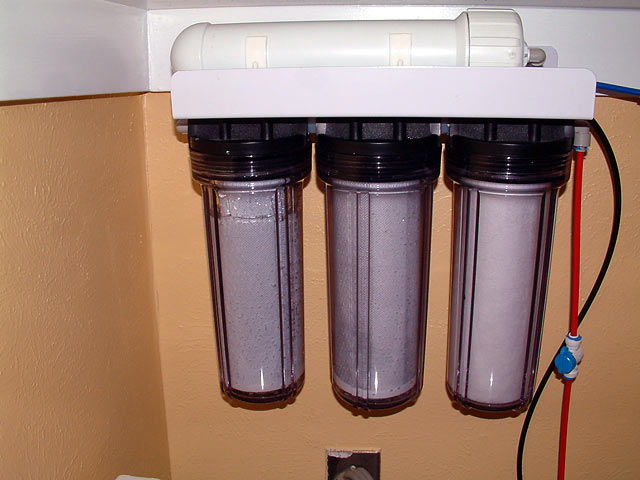
Let the unit run for about one hour (5 gallons worth) to wash out the food grade preservatives, but not through the DI resin. The system is now ready to be used again, and the new membrane should last one to five years. It should last several years, but some areas of the U.S. simply destroy membranes at one year unfortunately.
The membrane, the heart of the system, is good from one to five years. Water quality in your area directly affects that lifespan*, and I sell replacement membranes.
